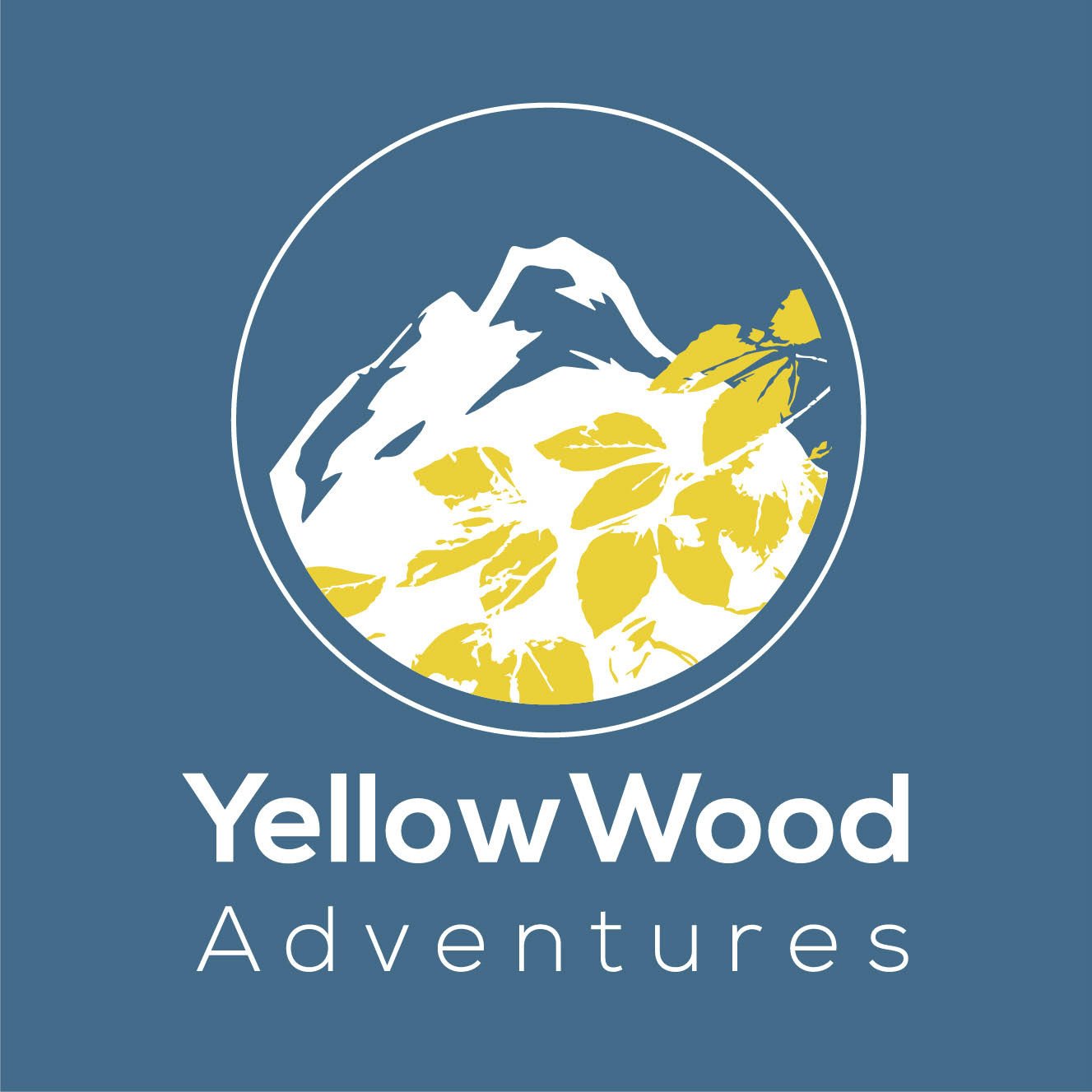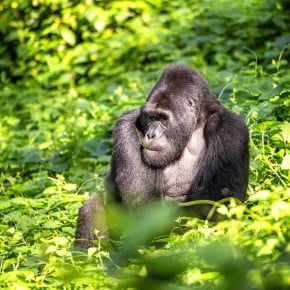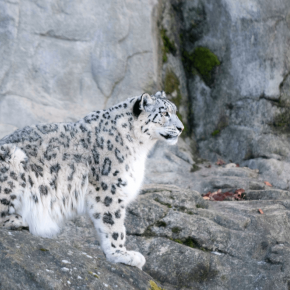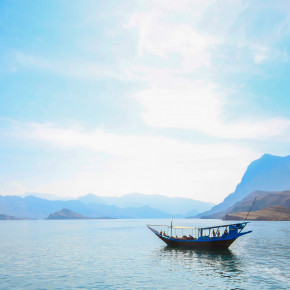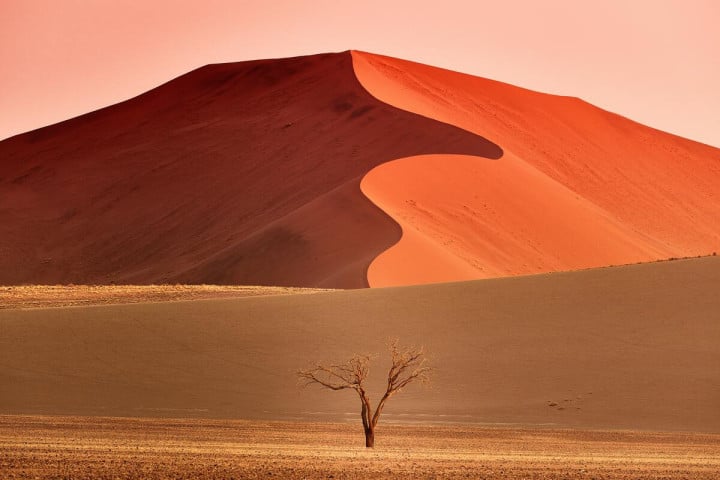
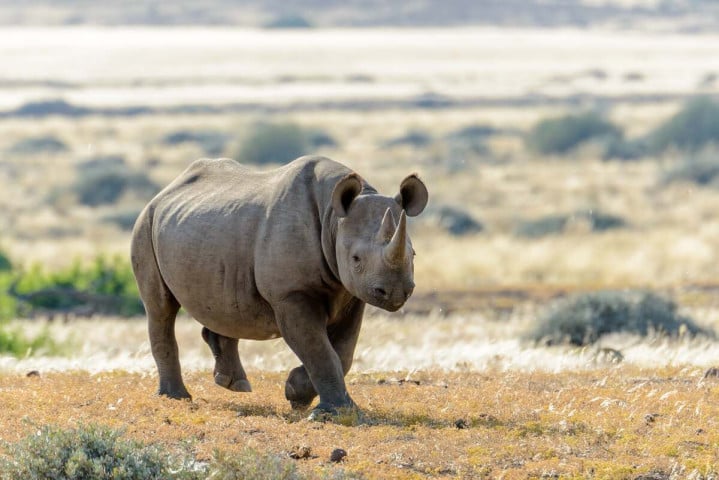
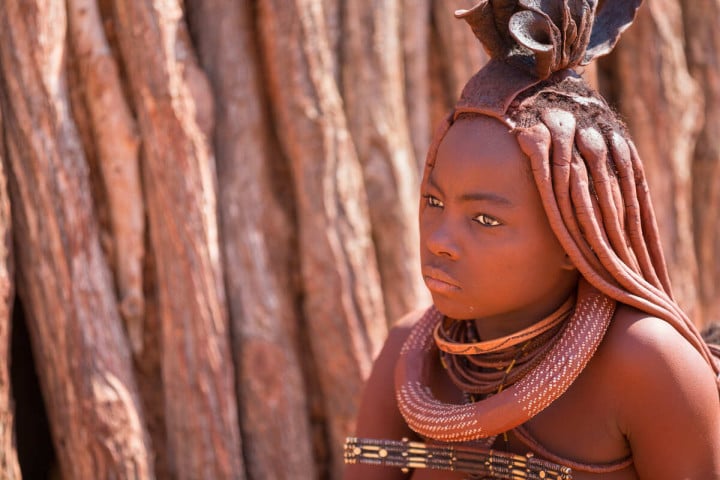
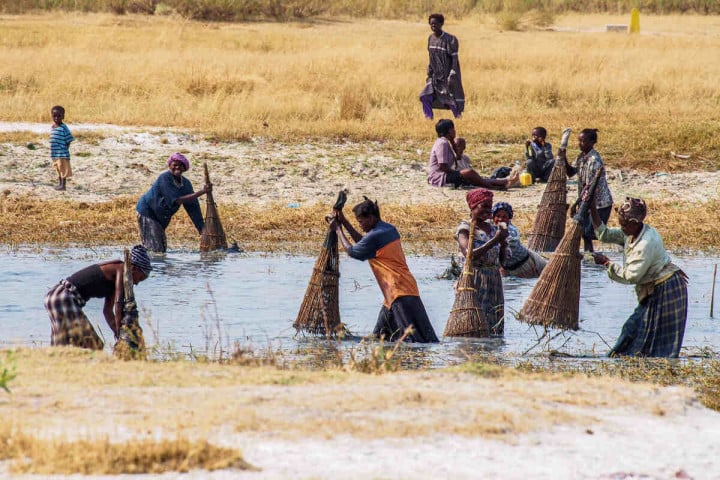
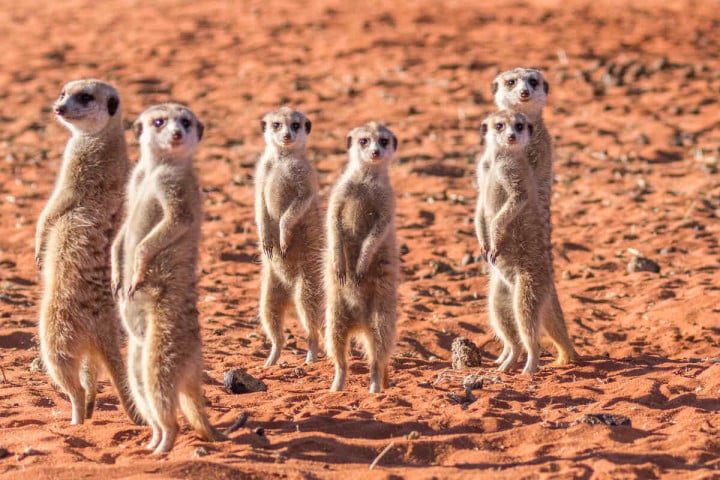
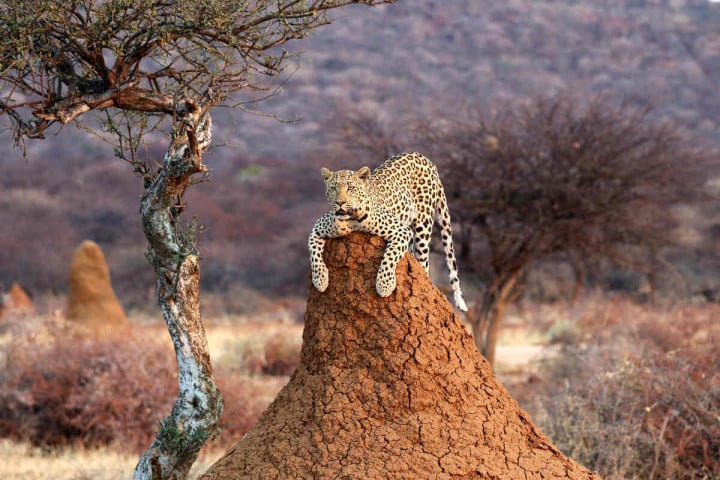
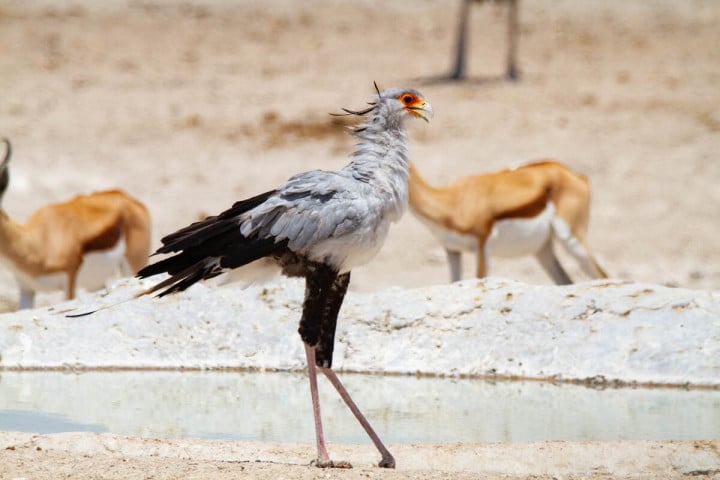
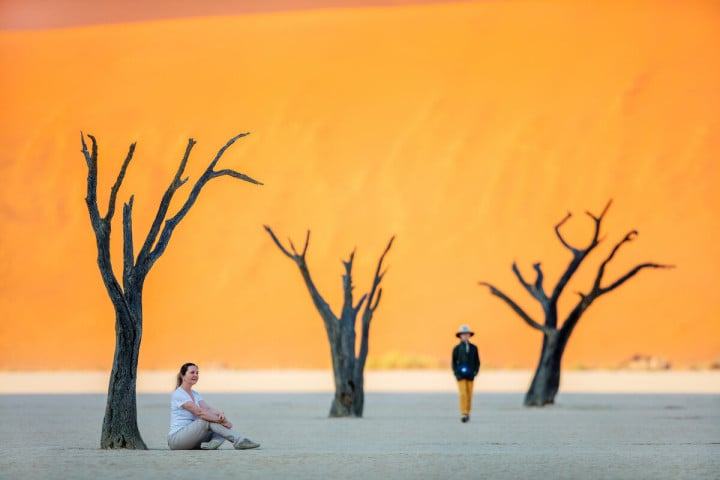
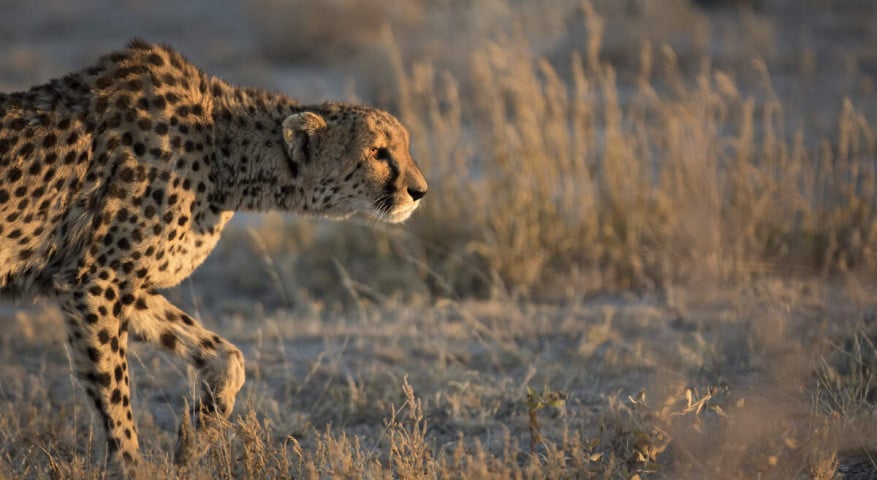
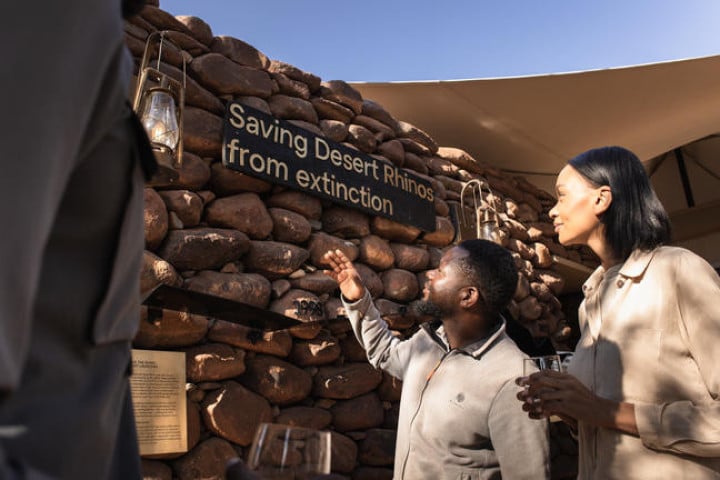
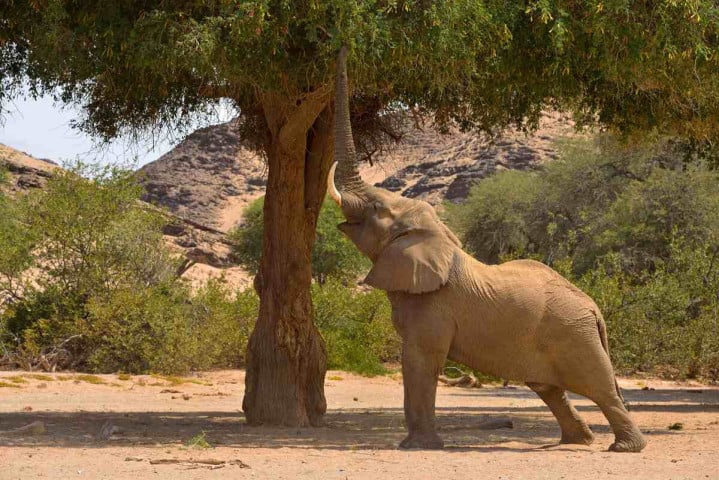
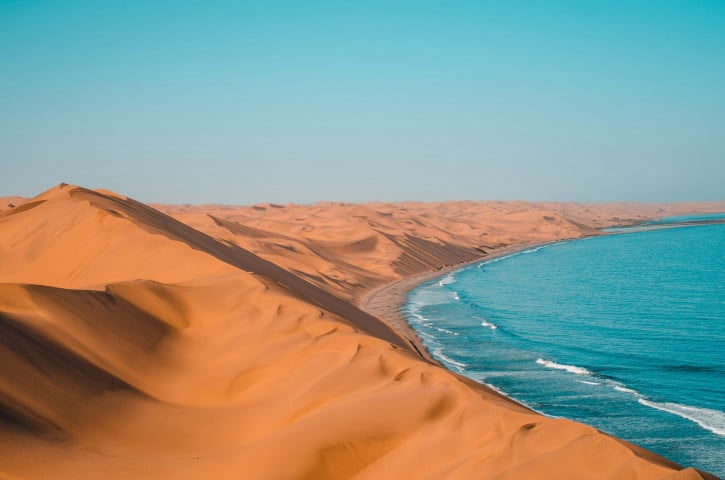
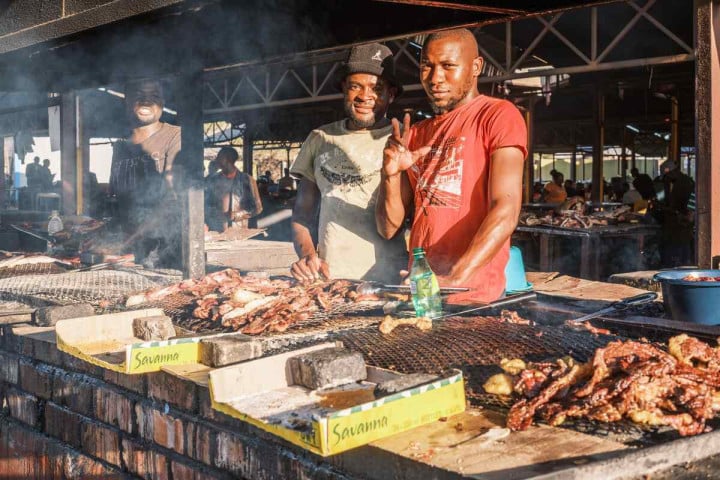
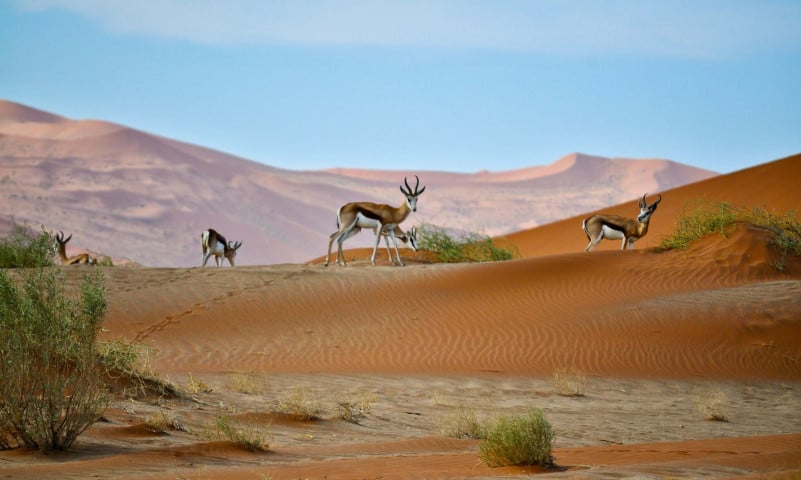
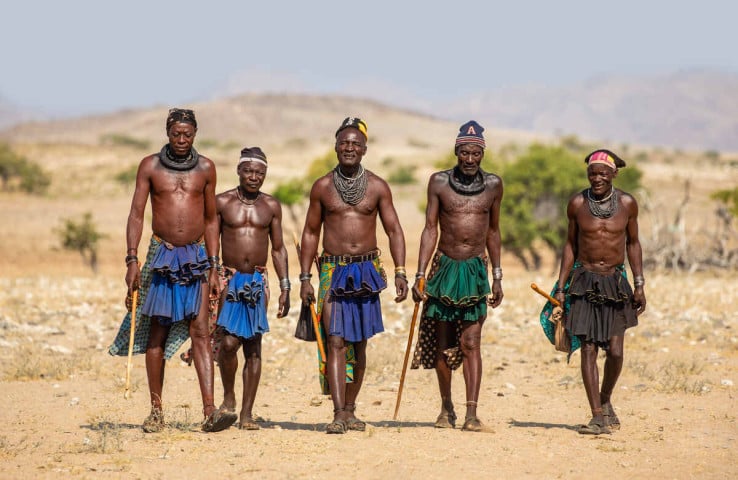
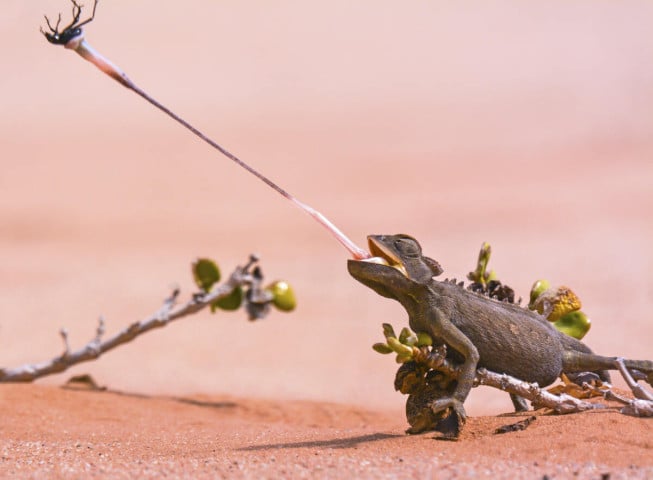
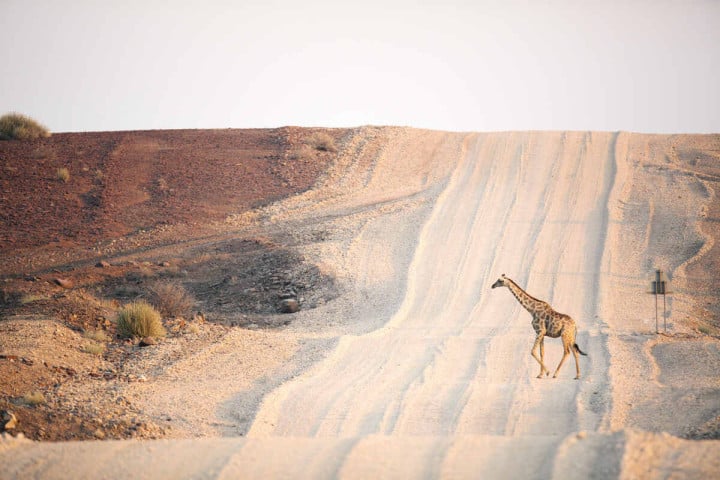
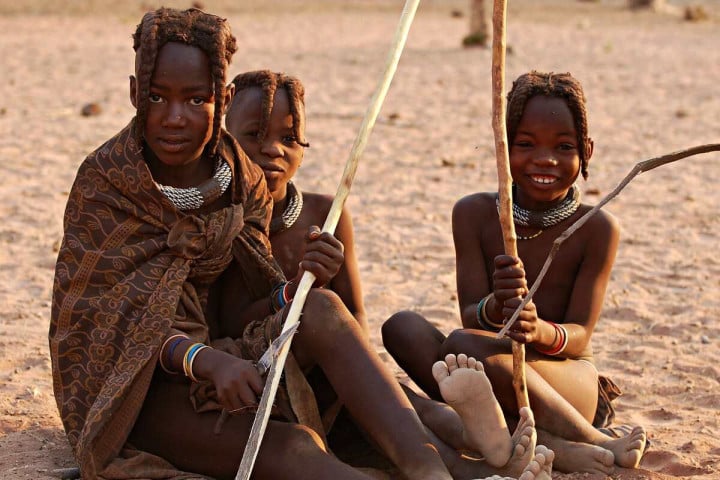
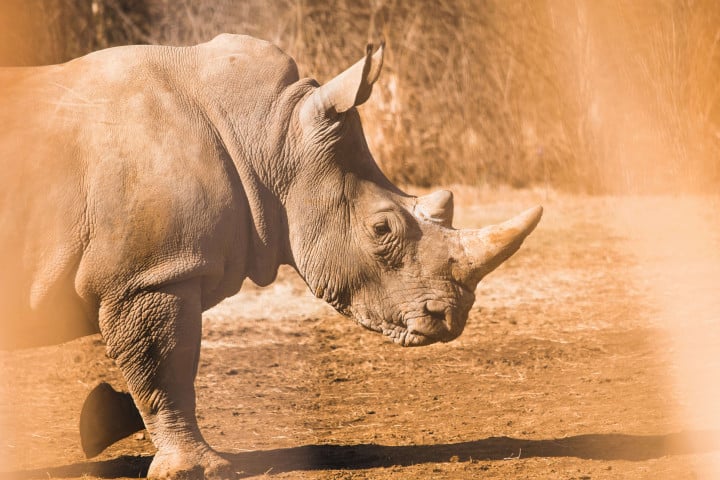



















- Overview
- Itinerary
- Esential info
- Packing list
Entry Level
Wildlife
Transfers
12 Nights
4 - 12
Group size
Leaders
Tour highlights
- Track Africa’s last free-roaming population of black rhinos
- Visit the towering sand dunes of Sossusvlei
- Explore Namibia's spectacularly scenic coast
- Incredible game drives & safari camps along the Mudorib River
Vast on a scale that’s almost incomprehensible, Africa’s least densely populated country stirs the soul and ignites a sense of adventure. Shaped over 2600 million years, landscapes invite awe and wonder. A source of fascination for photographers, fire-red sand dunes soar from the desert floor of Sossusvlei and ancient camelthorn trees stand frozen in time in the chalk-white pans of Deadvlei.
But beyond these classic sights are areas of silent beauty still relatively undiscovered.
Africa’s last free-roaming population of black rhinos can be found in the rubble-strewn landscapes of Damaraland, their survival due largely to the efforts of community conservation. Trained guides can lead you to track the endangered animals on foot, as well as our tour vehicles.
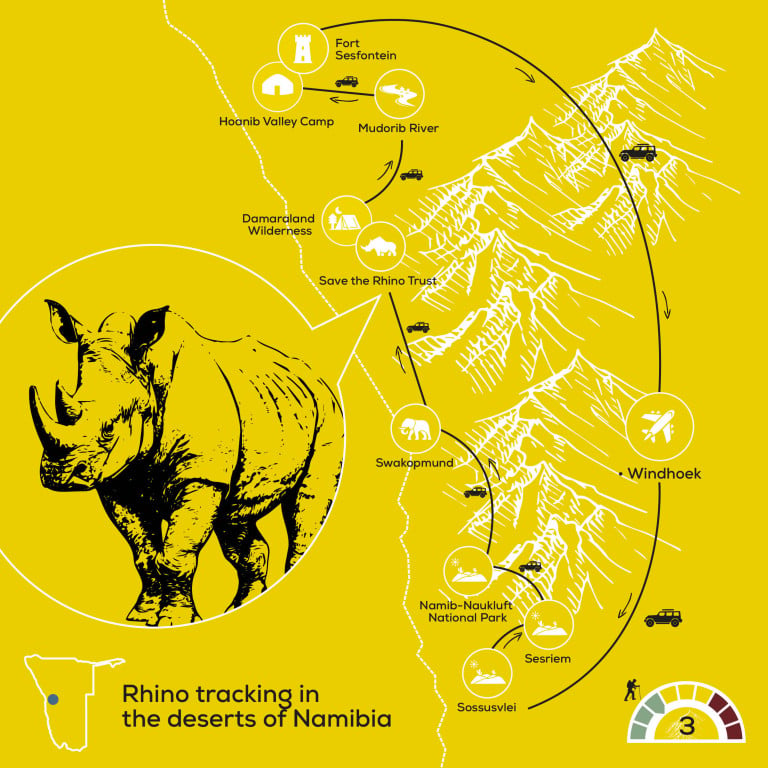
(Available as a small group tour or tailor-made holiday)
Further north in the Hoanib Valley, desert-adapted elephants, giraffes and lions wander through dry riverbeds against a mighty backdrop of feldspar-flecked mountains. Mist rolling in from the Atlantic Ocean’s Skeleton Coast shrouds the area in an early morning ethereal veil.
In a country where development has been minimal, the human footprint is light. Hints of ancient habitation are etched into the cave walls of Twyfelfontein, while an era of German occupation has left its mark in the ornate architecture of Swakopmund. A strong cultural identity is upheld by semi-nomadic Himba tribes, who practise a traditional way of life that’s as enduring as the landscape itself.
Burning brightly above the desert, night skies are a thrilling reminder of the grand universe which lies beyond. Everywhere, there’s a sense of revitalising solitude rarely found in our modern world. To learn more about the country of Namibia read our journal post here.
Day 1: Sossusvlei
Transfer
Dinner
Camping
On arrival at Windhoek Airport you will be escorted to your scheduled flight south to Sesriem, the gateway to one of Namibia’s most iconic destinations: the high desert dunes of Sossusvlei. Surrounded by granite outcrops and towering terracotta mountains, the cottages at Desert Quiver Camp feel exhilaratingly remote. Watch the sky simmer at sunset until stars ignite to night.
Accommodation: Desert Quiver Camp
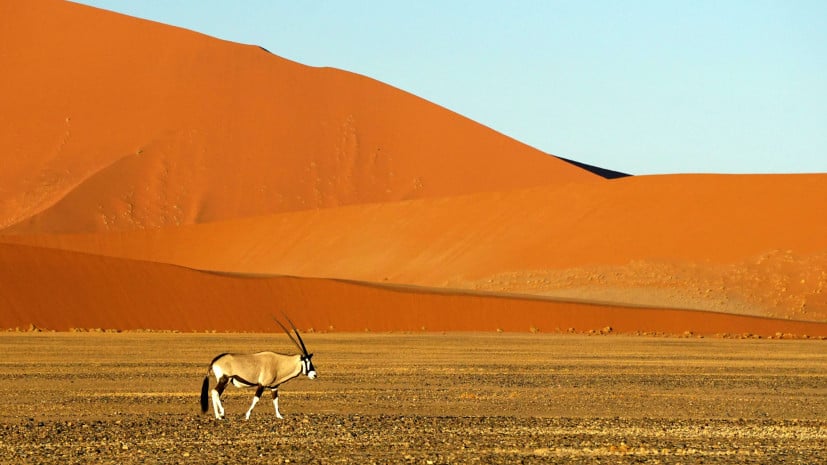
Day 2: Namib-Naukluft National Park
Transfer
Breakfast
Dinner
Camping
Sprawling across 50,000 square kilometres - more than twice the size of Wales – the Namib-Naukluft National Park is awe-inspiringly vast. Climb along the spine of ever-shifting dunes taller than skyscrapers and wander through fossilized camelthorn trees rising from the chalk-white clay pan of Deadvlei.
Accommodation: Desert Quiver Camp
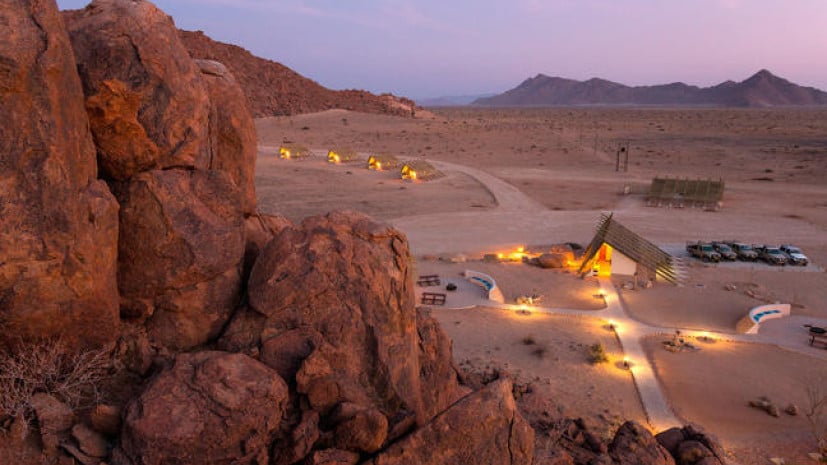
Day 3: Swakopmund
Transfer
Breakfast
Guest house
Today you will fly north to low-key coastal city Swakopmund on the edge of the Namib Desert to begin your road trip. From wide palm-lined avenues and colourful late 19th century architecture to the brötchen served in bakeries, echoes of a colonial past still resonate. In the heart of the historical centre, your accommodation is a short stroll from the beach, market and cafes.
Accommodation: Organic Stay Guesthouse
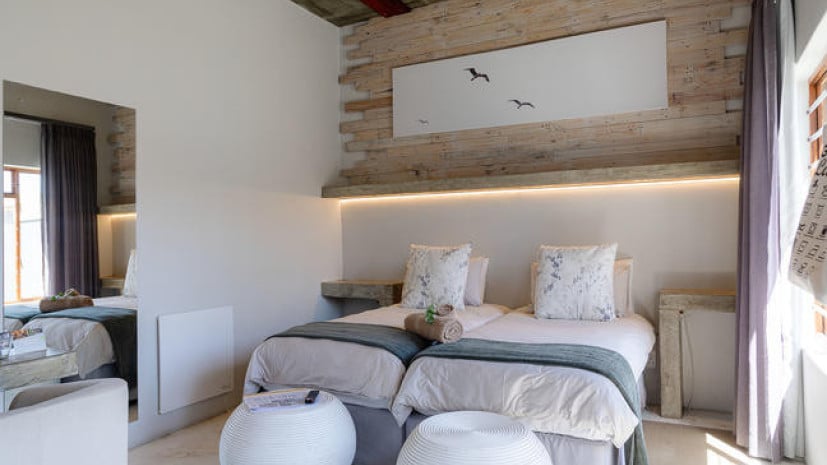
Day 4: Coastal exploring
Transfer
Breakfast
Lunch
Dinner
Boutique Hotel
Begin your adventure heading north towards Damaraland along the Atlantic coast, where a morning mist rolls into the desert. Visit a mosaic of other-worldly lichen fields, thriving from moisture in the air, and enter an area where San people lived for centuries beneath the shadow of the goliath Brandberg inselberg. After settling into your tent, meet a local farmer for an insight into the challenges of co-existing with free-roaming wildlife.
Accommodation: Ozondjou Trails
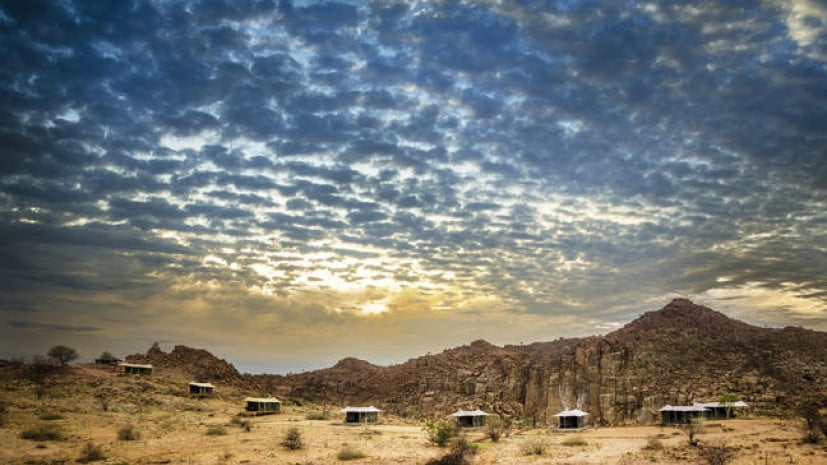
Day 5: Elephants
Transfer
Breakfast
Lunch
Dinner
Boutique Hotel
Witness conservation in action first-hand by shadowing the Elephant Human Relations Aid team’s daily patrol, searching dry riverbeds for desert elephants and studying their behaviour. The team help to reduce issues of human-wildlife conflict and create a positive relationship with communities. Travelling in a 4x4, expect to see other plains game along the way.
Accommodation: Ozondjou Trails
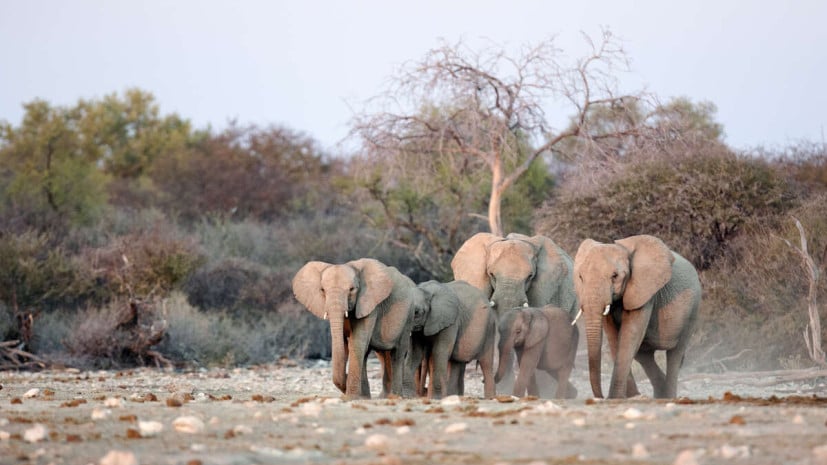
Day 6: Palmwag Concession
Transfer
Wildlife
Breakfast
Lunch
Dinner
Camping
Most of today will be spent driving into the Palmwag Concession, a spawling basalt landscape of plains strewn with fire-red rubble created by volcanic eruptions 125 million years ago. Find ancient petroglyphs etched on cave walls and desert-adapted animals emerging from the shadows. An excellent example of Namibia’s commitment to conservation, this protected area is managed in collaboration with communities.
Accommodation: Wilderness Desert Rhino Camp
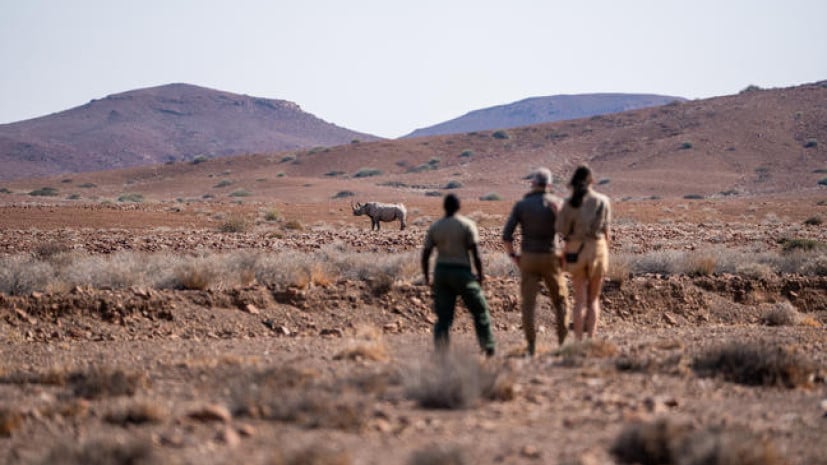
Day 7: Rhino!
Transfer
Wildlife
Breakfast
Lunch
Dinner
Camping
A highly endangered species hammered by poaching, the last truly free-roaming population of black rhino can be found in Namibia. Working closely alongside communities, Save The Rhino Trust has established a hugely successful eco-tourism programme, allowing these animals to move without threat or the need for fences. Accompanied by a local guide, track the rhinos on foots, shifting slowly between the cover of euphorbias.
Accommodation: Wilderness Desert Rhino Camp
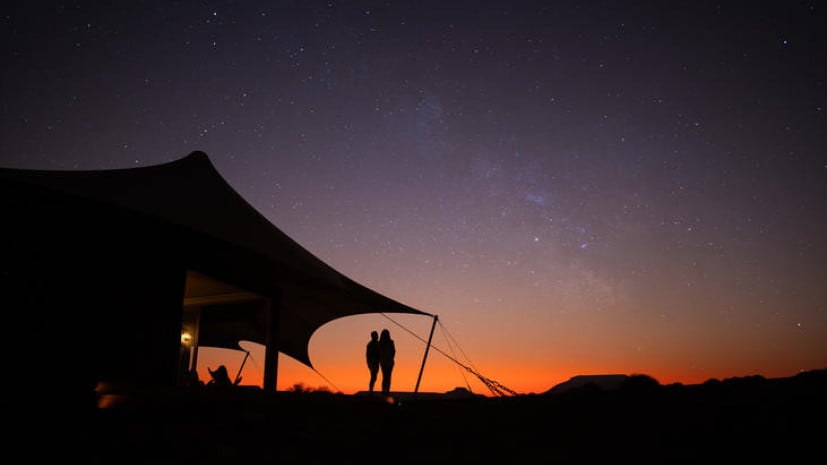
Day 8: Other wildlife
Transfer
Wildlife
Breakfast
Lunch
Dinner
Camping
One of the best ways to embrace Namibia’s wilderness is by staying in a mobile camp. For the next few days, you will be guided by nature, pitching up in remote areas beneath the stars. Search for springbok, oryx, kudu, ostrich, jackal, zebra, giraffe and elephants on a safari. If you’re lucky, there’s a chance to see lions, leopards and cheetahs too. It’s hard to imagine any life can exist in the dry, hostile desert, but an oasis of seasonal rivers and rich valleys allows wild animals to survive.
Accommodation: Mobile Safari
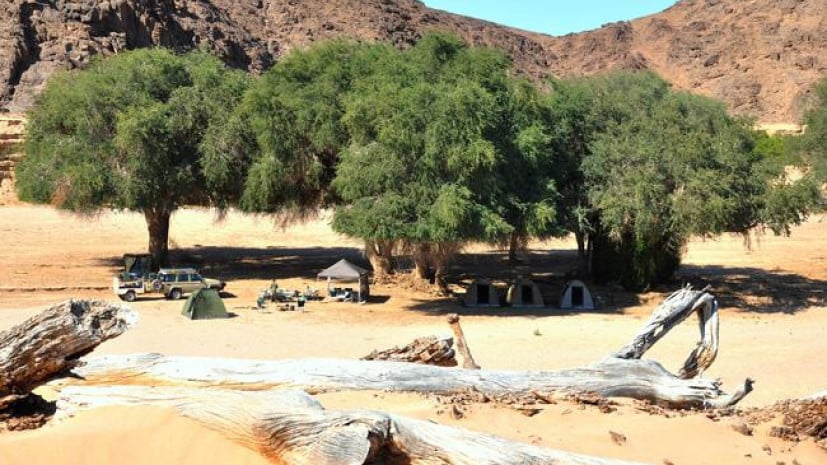
Day 9: Mudorib River
Transfer
Wildlife
Breakfast
Lunch
Dinner
Camping
Continue your adventure to the upper Mudorib River for opportunities to encounter black rhino and elephant. In the absence of roads, a maze of tyre tracks leads towards the Hoanib Valley, one of the most scenic spots in the country. Trickles of water run along a riverbed that flows every few years, a lifeline for an avenue of acacia trees soaring against pink feldspar-flecked mountains. Elephant, giraffe and lions often wander through this rugged paradise.
Accommodation: Mobile Safari
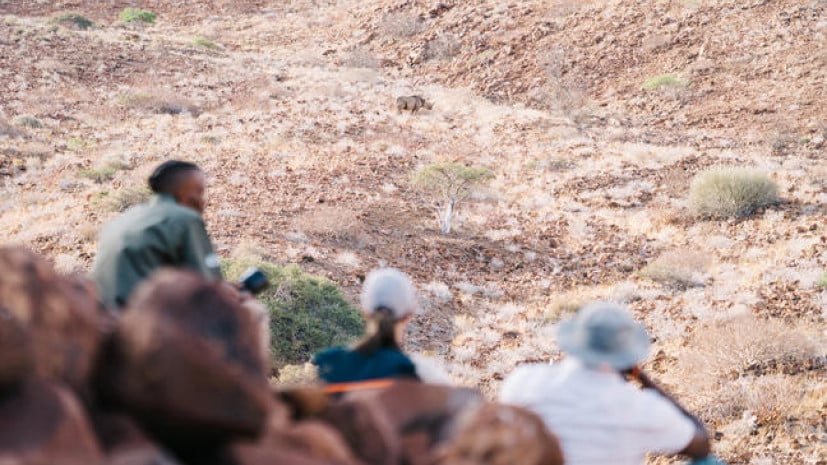
Day 10: Desert Lion Conservation
Transfer
Wildlife
Breakfast
Lunch
Dinner
Camping
Staying in the same camping spot, spend another day exploring the Hoanib Valley. Early in the morning, watch fog sweep in from the Skeleton Coast and climb rocks for a panorama of surprisingly lush gorges and arid plains. Until two decades ago, it was almost impossible to see desert-adapted lions. But a small population is now monitored by Desert Lion Conservation, with several animals collared.
Accommodation: Mobile Safari.
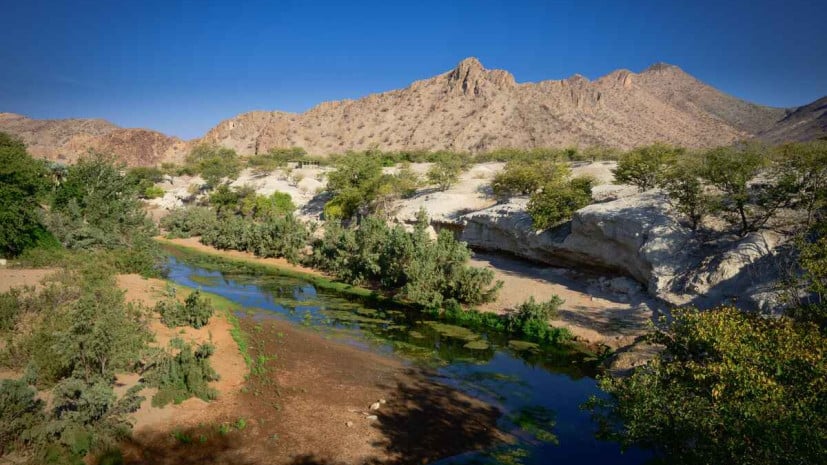
Day 11: Himba people
Transfer
Breakfast
Dinner
Lodge
With their ochre-coloured body paint and thick braids, Himba people are the most recognisable of Namibia’s 11 ethnic groups. Moving between mud-made dwellings in the north-western Kunene region, these semi-nomadic pastoralists have clung closely to their culture. Learn about the importance of the Holy Fire and different hair rituals during a visit to a local village. Stop at Sesfontein fort, once a Schutztruppe outpost during German occupation.
Accommodation: Brandberg White Lady Lodge

Day 12: Windhoek
Transfer
Breakfast
Guest house
Begin your journey back to Namibia’s laidback capital Windhoek in the central highlands region. Arriving late afternoon, there’s time to explore a city largely shaped by the German colonial era. Historical buildings include the Alte Feste fort, now a gallery showcasing African art, and the Lutheran Christuskirche Christ Church. Or relax by the pool or firepit in your boutique guesthouse.
Accommodation: The Elegant Guesthouse
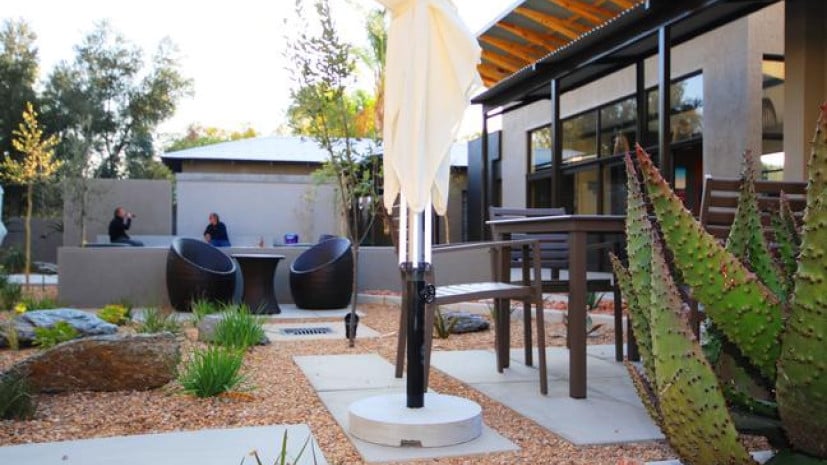
Day 13: Departure
Transfer
Breakfast
After breakfast – depending on the time of your flight – you will be transferred to the international airport, full of sandy memories, feeling reinvigorated by nature's beauty.

Adventure Optional Extras
Plant an additional 15 trees for your adventure
Carbon Compensation is not the perfect solution, and it is important to first reduce our carbon emissions as much as we can, yet trees remain an excellent natural technology to sequester carbon dioxide from the atmosphere to slow global warming.
For every client and guide who attends a YellowWood Adventure, we donate £30 to our partner charity WeForest to plant 15 trees to (over) compensate for the carbon footprint of the tour.
We also invite our clients to match this with an optional additional £30 for another 15 trees to be planted to help compensate for the carbon footprint of their international flights.
WeForest run many tree planting and tree maintenance projects such as this seedling nursery in the Amhara region of Ethiopia, the Amazon Rainforest in Brazil and many other projects in other countries including Zambia, Malawi, Tanzania & India.
Click Here to find out more about their amazing projects around the world.
Compulsory
Need a little help?
All adventures can be tailored as private bespoke trips.
Please contact us for more information:
+44 207 846 0197
Related Adventures
Booking Process
Select dates: Choose the dates for your adventure and consider adding any extra adventures or add-ons to enhance your experience.
Check the box to agree to our Terms & Conditions.
Make Booking: Click on "Make Booking." If you're booking more than 56 days before your adventure, you'll be redirected to secure WorldPay to make your deposit. If it's 56 days or less before your adventure, you'll need to make full payment. Rest assured, your money is held securely by the Association of Bonded Travel Organisers Trust.
Your booking will show as 'pending' in your YellowWood online account.
Confirmation: We'll be in touch as soon as possible to confirm your booking or discuss any availability limitations. Please refrain from booking transport or flights until we've emailed you to confirm your booking. (Note: Receipt of your booking form is not confirmation.)
Making payment: Once your booking is confirmed, we'll change the status of your final invoice from 'Pending Approval' to 'Outstanding,' indicating that it's ready for payment online.
You will receive a reminder email for your final payment 56 days before the departure date.
Feel free to contact us with any questions about your adventure or booking, we're here to help!
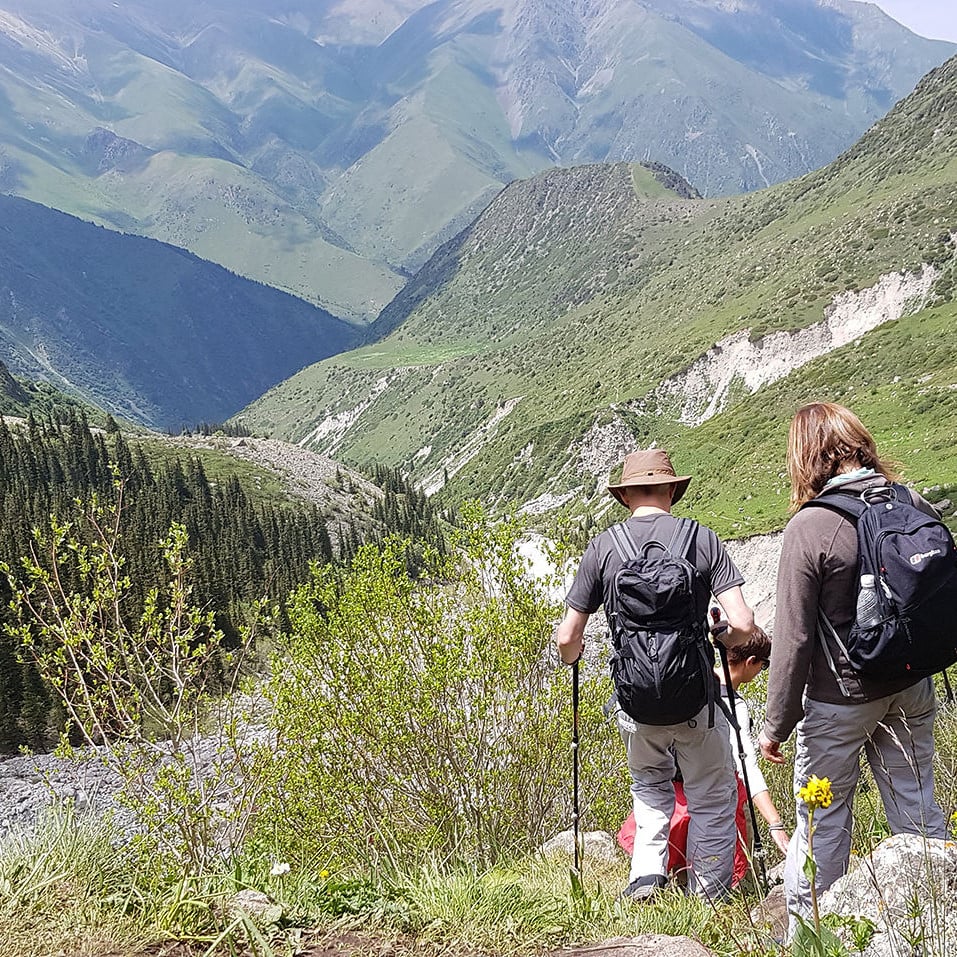
Grading
To help you choose the right adventure for you, we have given each itinerary a grading that relates to the level of Walking / Trekking you will experience during the trip. This grading can be found on the Yellow map on the adventure page of the website.
All of our trips involve a level of general activity so are designed for people who are in good health, enjoy the outdoors, and have a taste for adventure and some level of fitness. As will be clear from our destinations, the climate (and altitude) may be different to that which you are used to, so please take this into consideration when choosing the most suitable holiday.
Please read our Adventure Itinerary & Essential Information for more information and don't hesitate to contact us if you would like to chat through whether you have found a suitable adventure for you.
Grade 1-3: Entry Level
You need to be in good physical health to enjoy your active holiday, but you don’t need to be an experienced hiker. These itineraries offer a mix of sightseeing and easier walking for around 2-4hrs a day, with the emphasis on sights and cultural experiences.
Walks will be well marked or on defined pathways, and often around sites of interest. The expected amount of descent/ascent will depend on the landscapes of the destination, but will not exceed 400m/day, and will often be much less. Walks are at low altitude (below 3000m).
You will not be required to carry more than a day sack with water and essentials. Ensure you are aware of the weather conditions likely in the destination you are visiting and have a pair of comfortable and worn in walking shoes/boots.
Grades 4-6: Intermediate
You need to have a good level of fitness and be a regular walker for these adventures, with ideally some trekking experience. You can expect to be walking for 3-6 hours per day, not including rest stops, normally on good trail paths but with some uneven surfaces at times.
You will not be required to carry more than a day sack. You may be walking in more challenging temperatures. You will generally be walking at low altitude (below 3000m) but may walk at altitudes up to 4000m. The amount of ascent could be up to 800m in a day but will frequently be less. You may walk on consecutive days.
Ensure you are aware of the weather conditions likely in the destination you are visiting and have suitable clothing for this adventure.
Grades 7-9: Challenging
You need to have a good level of fitness with previous experience of trekking. Extra training before your trip will ensure that you get the most out of your adventure. Areas will be remote and terrain uneven.
Expect to walk for 5 – 8 hours a day, not including breaks, with some very steep ascents and descents. You will be walking at altitude (over 3000m but not higher than 5000m).
Ensure you are aware of the weather conditions likely in the destination you are visiting and have suitable equipment/clothing for this adventure (see the packing list for your adventure).
Please check individual itineraries for details of what you will need to be carrying with you.
Get in touch
CLICK HERE to schedule a call online with YellowWood Founder Sam McManus.
Or call us directly 24/7 on:
